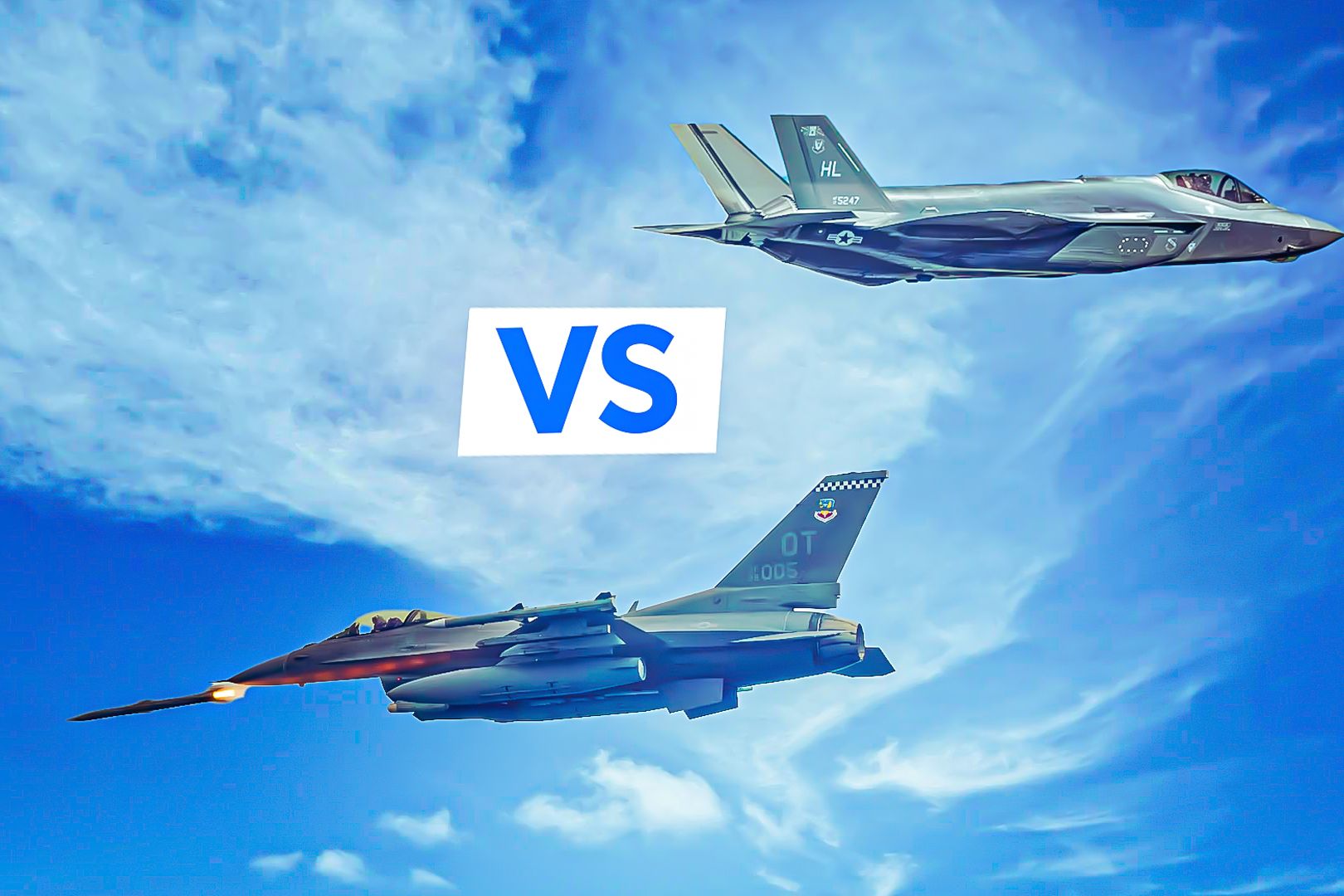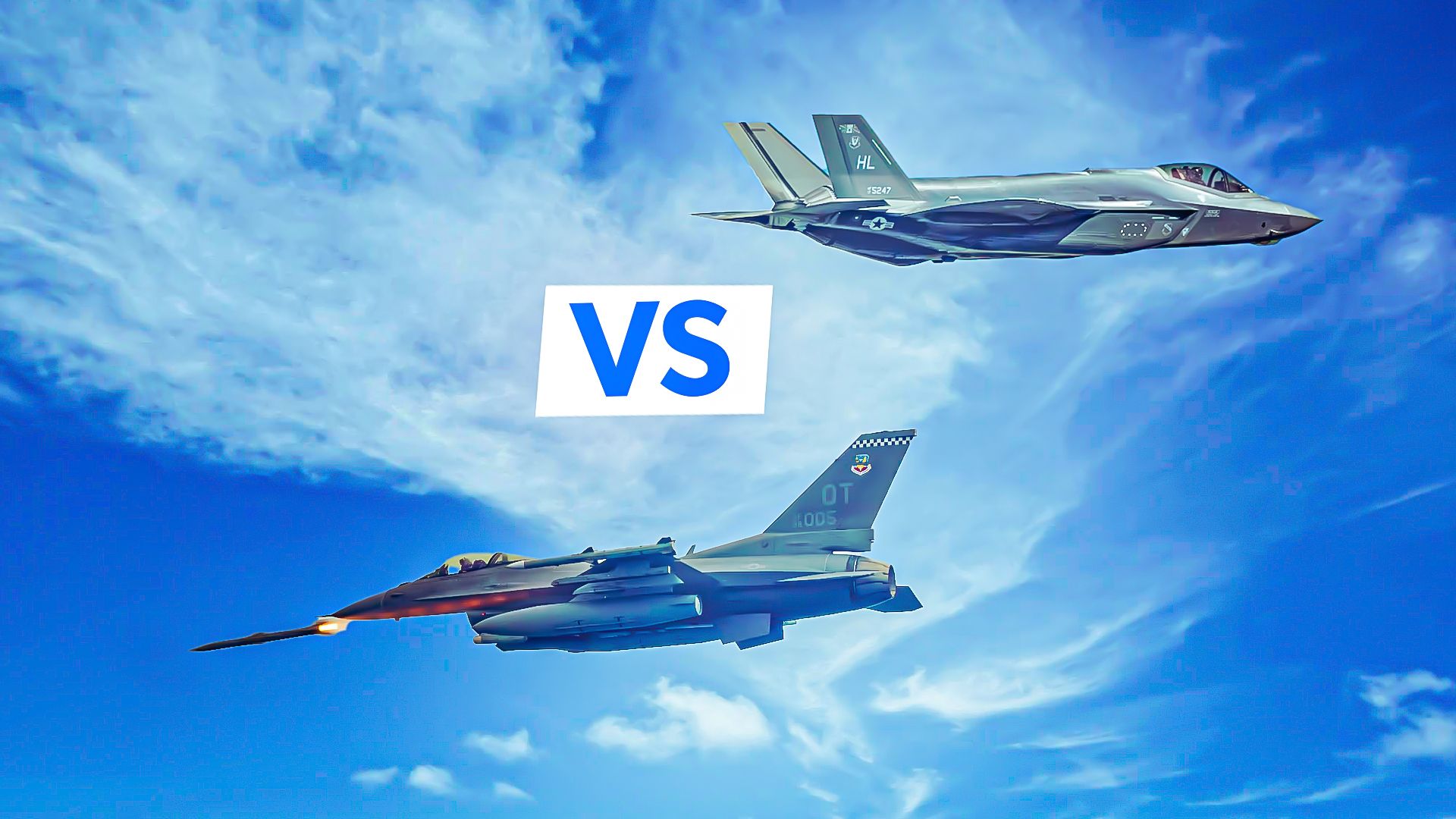
Summary
- The F-35 has a newer turbofan engine with higher thrust, outperforming F-16 in speed and range.
- Intangible benefits include F-35’s stealth capabilities and global popularity, despite higher cost.
- The F-16 boasts combat experience and cost-effectiveness, but F-35’s advanced tech prevails in a showdown..
That’s right, dear readers, Simple Flying proudly presents to you yet another 5th Generation vs. 4th Generation jet fighter on-paper showdown, After my last two thusly-themed articles wherein I profiled the F-22 Raptor as the 5th Generation rep, this time the F-35 Lightning II.will be repping the newer generation.
And this time, the 4th Generation rep will be the ubiquitous F-16 Fighting Falcon, AKA the “Viper”. Thus, this time we have not only the main plot element of 5th Gen v. 4th Gen, but also an intra-service US Air Force showdown (though the US Navy and Marine Corps also use the Lightning II, it’s a USAF asset first and foremost), and, for good measure, an intra-manufacturer showdown, as both the F-35 and the F-16 are proudly produced by Lockheed Martin (though the Lightning II is part of LM’s famed “Skunk Works” division whilst the Viper is not).
Without further ado then, let’s see how the F-35 and F-16 stack up against each other…
“Tale of the Tape”: F-35 vs F-16 head-to-head specifications
Needless to say, the F-16 is the older of the two platforms, debuting back in 1974 during the heady days of the Cold War, though the warbird certainly hasn’t remained frozen in time, as it’s seemingly constantly being improved and upgraded with more modifications and proverbial bells & whistles than you can shake a stick at. By contrast, the F-35 debuted in 2006 and is therefore “fresher on the scene” (so to speak).
As far as head-to-head technical specifications are concerned:
|
F-35A |
F-16C Block 50 and 52 |
Advantage |
|
|
Powerplant: |
1 × Pratt & Whitney F135-PW-100 afterburning turbofan, 28,000 lbf (125 kN) thrust dry, 43,000 lbf (191 k |
1 × General Electric (GE) F110-GE-129 for Block 50 aircraft , 17,155 lbf (76.31 kN) thrust dry, 29,500 lbf (131 kN) with afterburner (1 × Pratt & Whitney F100-PW-229 for Block 52 aircraft, 17,800 lbf (79 kN) thrust dry and 29,160 lbf (129.7 kN) with afterburner.) |
F-35 |
|
Max Airspeed: |
Mach 1.6 at high altitude
|
Mach 2.05, 1,176 kn (1,353 mph; 2,178 km/h) at 40,000 feet, clean[76]
|
F-16 |
|
Combat Range: |
669 NM (770 mi, 1,239 km) interdiction mission (air-to-surface) on internal fuel
|
295 nmi (339 mi, 546 km) on a hi-lo-hi mission with 4 × 1,000 lb (454 kg) bombs |
F-35 |
|
Service Ceiling: |
50,000 ft (15,240 m) |
50,000 ft (15,000 m) |
Even |
|
g Limits: |
+9.0 |
+9.0 |
Even |
|
Rate of Climb: |
45,000 ft/min (228.6 m/s) |
50,000 ft/min (254 m/s) |
F-16 |
|
Armament: |
|
|
Roughly Even |
Combat histories/operational performances
The Viper is far and away the more combat-tested of the two platforms. Interestingly, both the Fighting Falcon and the Lightning were first “blooded” in the highly capable hands of the Israeli Air Force (IAF); indeed, the IAF is thus far the only entity to use the latter warbird in combat.
The IAF scored the F-16 platform’s first air-to-air kills, bagging a Syrian Mil Mi-8 helicopter and a MiG-21 “Fishbed” fighter plane, in April and July 1981, respectively.
Meanwhile, on June 7 of that same year, the IAF dramatically demonstrated the F-16’s efficacy in air-to-ground missions when they carried out Operation Babylon, AKA Operation Opera, the strike against Saddam Hussein’s Osirak nuclear reactor in Iraq, thus setting back Saddam’s aspiring nuclear weapons program by a decade.
Since then, the F-16 has seen a myriad of combat engagements, in the hands of IAF, USAF. and Royal Netherlands Air Force (RNLAF) pilots alike, amongst others. Overall, the F-16 has amassed a 92:13 kill/loss ratio, according to FlyFighterJet.Com.
Meanwhile, the F-35 was first used in combat in 2018, though the Israeli Government was very vague and rather mum about specifics. Fast-forward to 2021, and we got a few more details about the Adir’s engagements that year, being used to shoot down multiple Iranian drones. Last but not least, last year, IAF F-35 drivers pulled off the impressive feat of shooting down a cruise missile that the Iran-backed Houthi terrorists in Yemen had evidently launched.
Intangibles
The F-35 has the obvious advantage of stealth, i.e. near-invisibility to enemy radar and therefore less likely to be detected until it’s too late for the bad guys, although, in fairness the F-16 has a fairly small radar cross-section (RCS) for a 4th-Generation fighter.
Both planes have proven to be quite popular with America’s allies, having generated a large number of foreign military sales (FMS) orders. The Viper is *the* world’s most common fixed-wing aircraft in military service, with 26 users (at last count) around the world. Meanwhile, the Lightning II is no slouch in this category either, with 18 current users worldwide and three more customers waiting their turn in the queue (Czechia, Romania [who is concurrently buying F-16s for good measure], and Portugal).
The two biggest advantages of the F-16 over the F-35 — at least when it comes to American-owned specimens of the two warbirds — have been cost-effectiveness and reliability. Regarding the “dollars & sense” (so to speak) aspect, Helen Krasner of Executive Flyers gives us this info on the Fighting Falcon’s price tag:
“While there is no set price of an F-16, we know that at the very least the cost ranges in the tens of millions of dollars…The most expensive F-16 variant: the Block 70 and 72 cost as much as $63 million per unit.”
By contrast, the Lightning II currently carries a price tag of a whopping $109 million per airframe! As for the F-35’s reliability controversies, time limitations prevent me from going into all the gory details, but you can get a good summation from this February 2024 Air & Space Forces Magazine article.
But then again, military history is replete with examples of weapons systems and technologies that were plagued by proverbial growing pains and bugs in the system and monkey wrenches in the works that were eventually sorted out; from the F-14 Tomcat to the AH-64 Apache helicopter to the V-22 Osprey (for the most part, but sadly not entirely) to the M1 Abram main battle tank to the Bradley Fighting Vehicle.
What’s more, as I’ve said repeatedly in the past, those FMS customers, for whatever reason, haven’t run afoul of the reliability issues with the F-35s that the Yanks have endured. As some Royal Australian Air Force (RAAF) officers recently told me:
Without a doubt, the F-16 remains an excellent fighter and ground attack aircraft that continues to prove its worth, most recently in the hands of America’s allies like Ukraine and Iraq. But when it comes to a hypothetical WWIII scenario between the United States and a “near-peer” adversary such as China and/or Russia, the stealth technologies of the F-35 would still provide the US with a far better chance of establishing air superiority in fights against the Sukhoi Su-57 “Felon” and/or Chengdu J-20 “Fagin.”
Warts & imperfections and all, the F-35 remains the wave of the present and near-term future of US fighter jet capability, and therefore wins this hypothetical showdown against the F-16.

